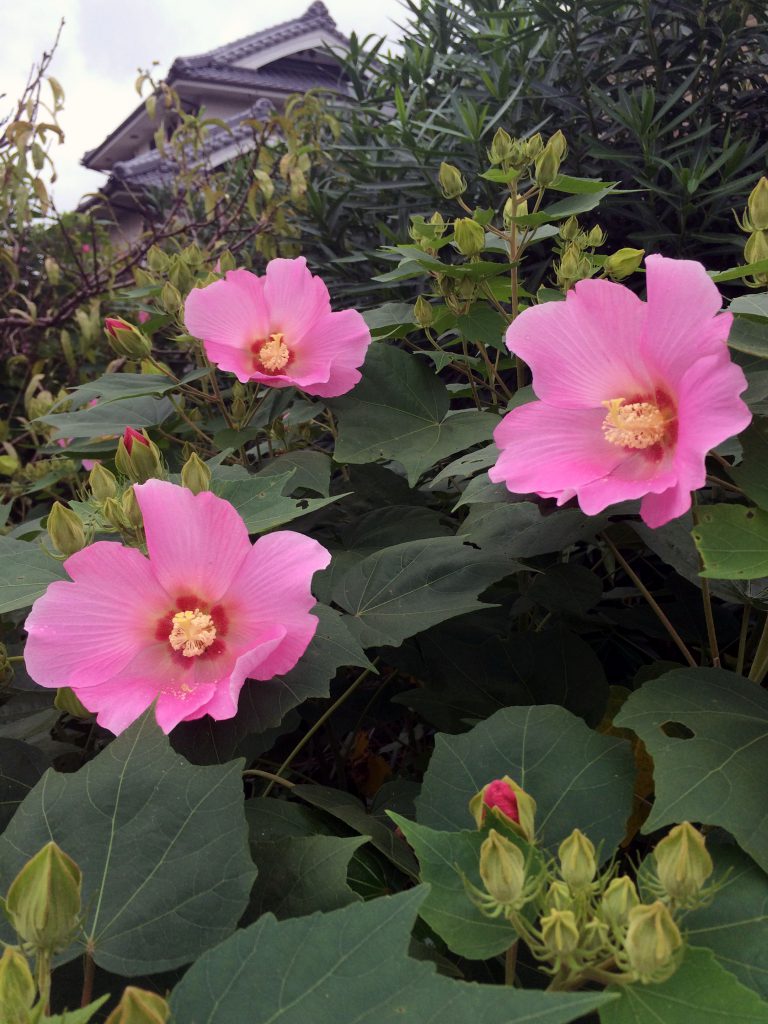
Since “Fuyo” is also an eulogistic name for Hass, it is also called “Mokufuyo” when distinguishing it. It has become wild in China, Taiwan, and Okinawa, Kyushu, and Shikoku in Japan, but it is presumed to be originally from China. Especially in the Nansei Islands, the islands of Kyushu, and the Izu Islands, strings and ropes woven from Fuyo have been confirmed, and it seems that Fuyo has been used for a long time. Fuyo for ornamental use has a record in the Muromachi period, but it was widely cultivated in the Edo period. Fuyo has a height of about 4 m and blooms large flowers with a diameter of 10 to 15 cm. It is a one-day flower that opens from the time the sun begins to rise in the morning and withers at sunset. Due to its soft flower appearance and fragility, it has long been used as an analogy for beautiful women, and has been given the flower words “delicate beauty” and “graceful lover.” On the other hand, because it is resistant to exhaust gas, it can now be seen well even when planting on the road. Horinji Temple in Nishinokyo, commonly known as “Daruma-dera”, is known also as a Fuyo spot, and now you can see the Fuyo blooming around the statue of Daruma in front of the Daruma-do.
「芙蓉」はハスの美称でもあることから、特に区別する際には「木芙蓉」とも呼ばれます。中国、台湾そして日本の沖縄、九州、四国では野生化していますが、もともとは中国原産てあると推測されています。特に南西諸島や九州の島嶼部や伊豆諸島などでは、フヨウの繊維で編んだ紐や綱が確認されていて、古くから芙蓉は利用されていたようです。観賞用としての芙蓉は、室町時代にその記録が残っていますが、広く栽培され出したのは江戸時代です。芙蓉は高さがおよそ4mにものぼり、直径が10から15cmにも達するほどの大きな花が咲かせます。朝太陽が上り始める頃から花を開き日没と共に枯れてしまう一日花です。その柔らかな花姿と儚さから、昔から美しい女性の例えとして使われ、「繊細な美」「しとやかな恋人」という花言葉がつけられました。反面、排気ガスに強いという特徴があるため、今では道路の植え込みでもよく見ることができます。「だるま寺」の通称で知られる西ノ京の法輪寺は芙蓉スポットとして知られ、今、達磨堂前の達磨像を取り囲むように咲く芙蓉が見られます。
